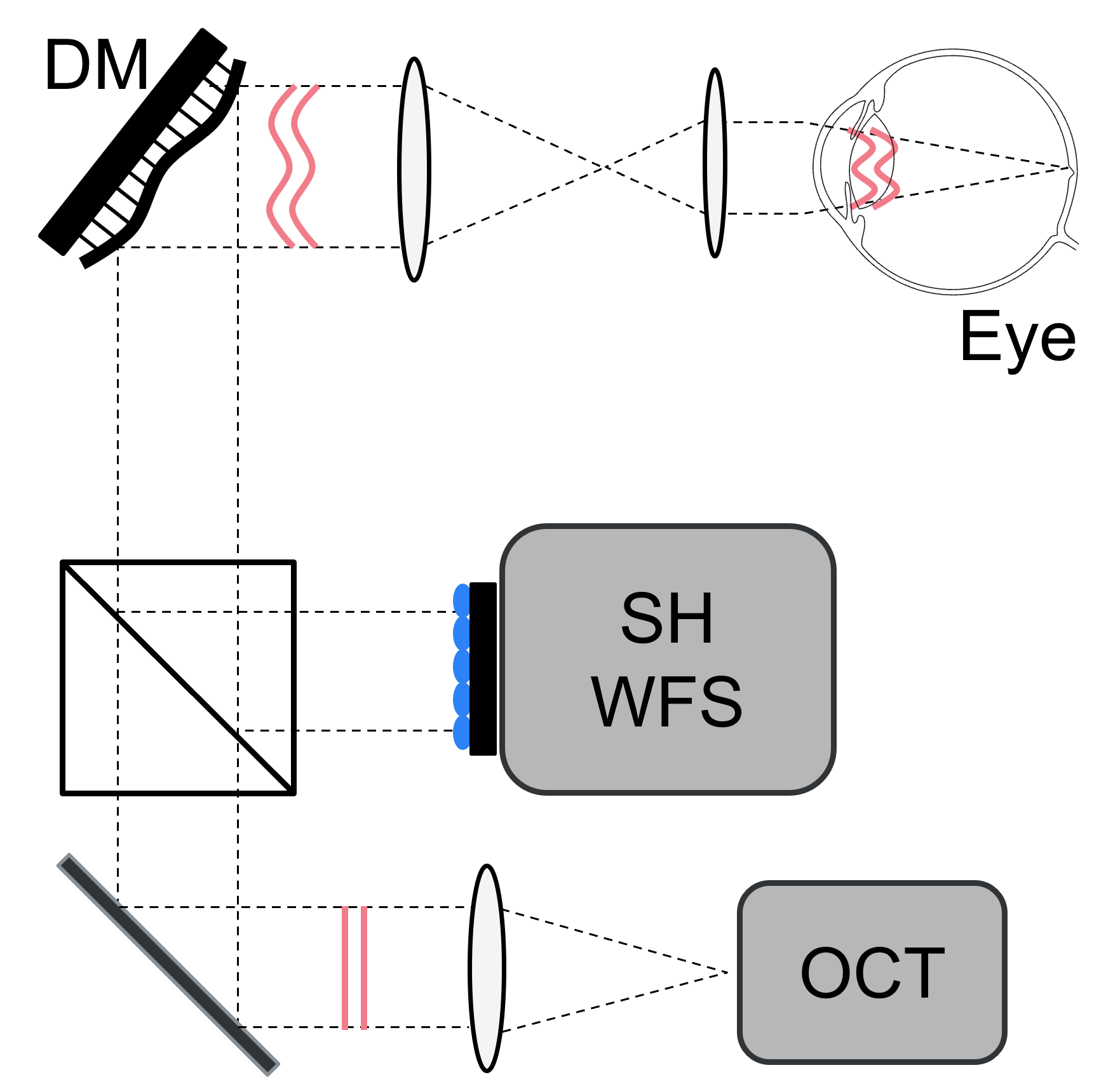CEPS CDT MScMRes Project:
Image-Guided Adaptive Optics Control

Background
Adaptive Optics (AO) is an exciting technology that was initially developed for astronomical imaging with ground based telescopes, providing dynamic correction of distortion caused by turbulence in the atmosphere. The principle behind AO is to characterize the distortions that cause blurring, and to physically compensate for them using a deformable mirror integrated with the imaging system in order to restore a high quality image. The underlying methods used in AO are based in feedback loop control; the distortions are measured, a correcting term is calculated and applied to a spatial light modulator (SLM), and the process repeats. Astronomical imaging systems often use a Hartmann-Shack wavefront sensor (HS-WFS) for measuring the aberrations, and a shape-changing deformable mirror powered by MEMS, PZT actuators, or micro-induction coil actuators. AO can also be combined with high resolution bio-microscopes to improve the quality of diagnostic images. AO has also been adapted to biophotonics for a variety of applications, ranging from multiphoton microscopy to in vivo ocular imaging, revealing high resolution cellular (and sub-cellular) features. For applications in thing biological samples, the back-scattering properties of tissue optics makes wavefront sensing with a HS-WFS very challenging. New methods of AO control are current area of electronics and optics research with a broad range of applications.
Objectives:
Another method of AO control uses the image quality itself to control the deformable mirror. This approach is similar to auto-focus on a camera, acquiring multiple images in rapid succession while adjusting the lens. The image-guided approach to AO uses a merit function (e.g. brightness or sharpness) to calculate the quality of the image, and attempts the maximize this value by controlling the shape of the deformable mirror in a feedback loop. In addition to image defocus, AO seeks to also correct astigmatism, coma, and other aberrations. Image-guided AO has been demonstrated using search-based and model-based approaches of the control space of the deformable mirror. Novel methods that are faster and reduce the number of iterations (faster convergence) are needed for high speed applications. The objective of this project is to investigate novel methods for controlling the shape of the deformable mirror for image-guided AO. A possible approach would be to use Deep Learning for image-guided AO control, and this project is a good application to gain introductory experience with Deep Reinforcement Learning (DRL) for biomedical optical imaging.
Methods:
The initial part of the project will be performed as a physics-based simulation (using MatLab or Python) to introduce the student to the effects of wavefront aberrations (defocus, astigmatism, coma, etc.) that cause image degradation (blurring). Next, the simulation will be expanded include the effects of a virtual deformable mirror to correct the wavefront and restore sharp image features. For students that are remote, the simulated AO environment will be used to model and evaluate the control algorithms in silico. For students that are interested in practical laboratory project work, a real AO system will be available. The systems, simulation or lab-based, will allow the exploration of control approaches to shape the deformable mirror to optimize a merit function calculated on the final image.
Novelty:
Cellular and sub-cellular resolution optical imaging enabled by AO has significant potential for improving medical diagnosis and personalised medicine. The AO application area is a hot topic for system control with high novelty, with opportunities for multiple publications in Optica (formerly OSA) and IEEE journals. Our lab regularly presents at major international conferences, such as SPIE Photonics West (annual; San Francisco, USA), SPIE/Optica European Conference on Biomedical Optics (bi-annual; Munich, Germany), and IEEE International Photonics Conference (annual; Vancouver, Canada in 2022).
Doctoral projects and Scholarships
Medical imaging with OCT, and novel approaches to medical image analysis are exciting topics for research. Students that are also interested in pursuing a PhD in optical medical imaging should consider applying to the EPSRC DPT. The application deadline (April 20, 2022) is rapidly approaching, but there is still plenty of time to submit a strong and coordinated application.